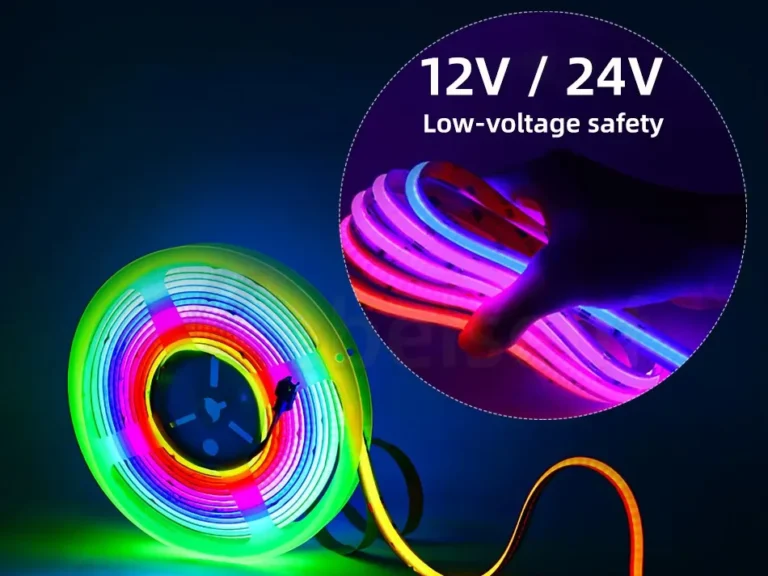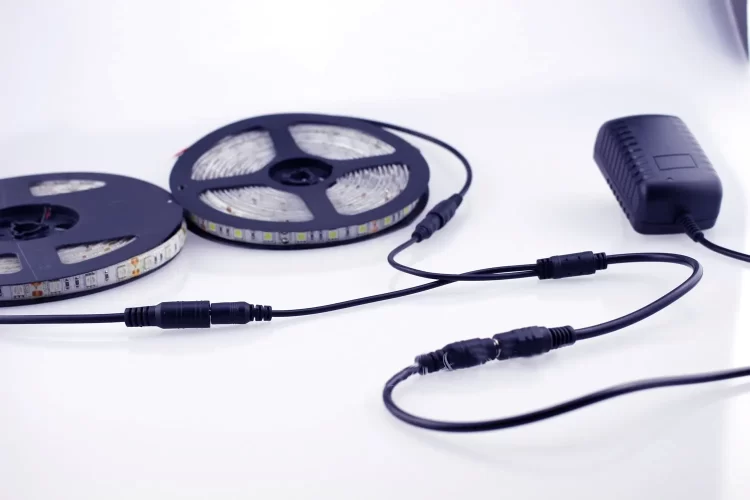If the lighting layout of the home is not done well in the early stage of the decoration, it is really troublesome to change the later stage, because the main light source is on the roof, all of which involve digging lines and grooving or suspended ceilings. The early layout is not in place, the lighting can not meet the needs of the family, and even if the wall lamp, floor lamp, desk lamp is used to make up, it is unlikely to achieve the most ideal state.
In order to ensure that the lighting effect can achieve the desired ideal state, after we do a good job of lighting layout, specific to each lamp, but also pay attention to choose the right light source, otherwise, the layout of the front is also likely to be wasted!
When selecting a light source, kelvins and lumen are two very important reference indicators.
When you buy led lights, some of the specifications and terminology about LED lights may confuse you. Many people have no concept of color temperature and brightness, and choosing the right color temperature and brightness is crucial to home comfort. This article will focus on the terms “lumen” and “Kelvin temperature”. We will explore what these terms mean and how different values will affect the performance of LED luminaires.
In simple terms, the lumen value of light indicates brightness, and the Kelvin temperature indicates color.

What are Kelvins?
The Kelvins (thermodynamic temperature scale or absolute temperature scale) is a unit of temperature in the International System of Units. The Kelvin temperature is often denoted by the symbol “K”. It’s also what we often call color temperature.
Color temperature is a unit of measurement that indicates the color component of a light. In theory, color temperature refers to the color of the absolute blackbody after heating from absolute zero (a 273 ° C). The black body is exposed to heat. It turns from black to red, yellow, white, and finally blue. When heated to a certain temperature. The spectral component of the light emitted by the blackbody. It is called the color temperature at this temperature, the unit of measurement is “K” (Kelvin), if the light emitted by a light source, and the light emitted by a black body at a certain temperature contains the same spectral composition. It is called a certain K color temperature, such as the color of the light emitted by a 100 W bulb, and the color of the absolute blackbody at 2527K, then the color temperature of the light emitted by this bulb is: 2527K+ 273K=2800K.
The Kelvin temperature of a light represents the color that a bulb will produce. Generally, a light’s Kelvin temperature will be fall somewhere between 2000K and 6500K. It’s important to choose a proper temperature for the your LED bulb’s application. Below is a chart showing the different Kelvin temperatures on the visible light spectrum.
The Kelvin temperature of a light represents the color that a bulb will produce. Generally, a light’s Kelvin temperature will be fall somewhere between 2000K and 6500K. It’s important to choose a proper temperature for the your LED bulb’s application. Below is a chart showing the different Kelvin temperatures on the visible light spectrum.

What are Lumens?
Lumen ( lm) is the physical unit describing the luminous flux . It represents the amount of energy that the light source can perceive in the surrounding space per unit time.
Lumens are defined as the luminous flux emitted by a point light source with a luminous intensity of 1 candela (cd) in a unit solid Angle (1 sphericity). Specifically, lumens are the total emitted luminous flux produced by a candle at a specific solid Angle. It is defined on the basis of Candela spherical Angle (cd times sr). Lumens describe the light energy radiated by a light source into the surrounding space in unit time, and this energy is perceived by the human eye.Lumens are used to measure the total luminous flux of the light source and help determine the brightness and use scenario of the lighting device.
Lumens measure how much light you are getting from a bulb. More lumens means it’s a brighter light; fewer lumens means it’s a dimmer light.
Lumens let you buy the amount of light you want. So when buying light bulbs, think lumens, not watts.
To replace a 100 watt (W) incandescent bulb, look for one that gives you 1600 lumens. If you want darker, choose fewer lumens; If you prefer brighter light, go for more lumens.
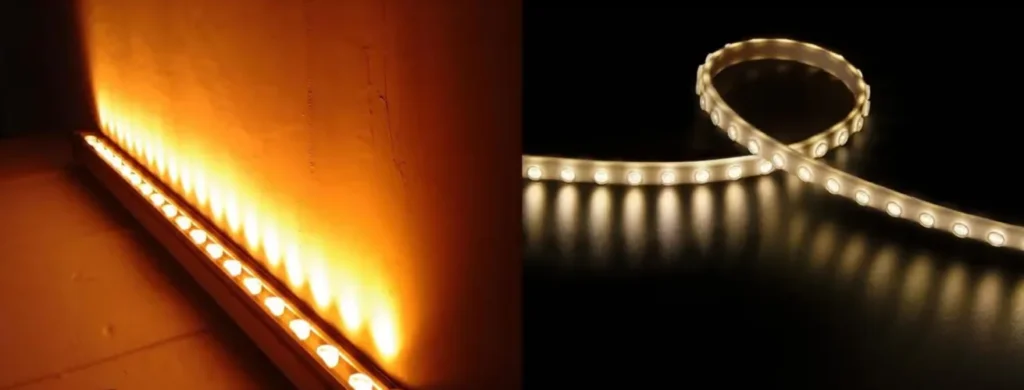
How to choose the color temperature?
Different types of lamps need different needs. In the past, there were few color temperature options. This is because older incandescent and halogen lamps are warm white.Now, however, in addition to less efficient incandescent and halogen bulbs, LED lighting on the market is also maturing. Each lighting product has a range of color temperatures to choose from.
For example, functional lighting such as the main lamp requires a higher color temperature, while ambient lighting such as desk lamps requires a lower color temperature.
• 2200K-2500K:
This color temperature of light is very warm, the tone is close to pink, suitable for atmospheric lighting.
But it may be too warm for general lighting. For example, the Kelvin temperature of a candle is about 2200K, which is also the most comfortable temperature for light in a room.

• 2700K-3000K:
Warm, cozy light with a yellowish tinge. Light sources in this temperature range are ideal for functional and general lighting in most rooms, such as kitchens, foyers and living rooms.
• 4000K:
Neutral, clear light that simulates daylight. This light is ideal for functional lighting, such as a desk lamp in a home office or a makeup light in a bathroom. This color temperature is a cool tone in the home environment, if you want a more comfortable atmosphere, do not choose this color temperature.

• 5000K:
The neutral colour of 5000K lighting aids in the accurate and appealing display of products, enhancing the shopping experience for customers. In office environments, 5000K LED lights contribute to a productive, focused atmosphere while minimizing eye strain and fatigue.
• 5600K:
Neutral light, same color temperature as natural light. However, in the home environment, this light is very cold, so it is rarely used in home light sources. It is often found in public environments such as companies or shopping malls and is also a common color temperature.
• 6000-6500K:
6000-6500K LED lights emit a cooler, bluish-white light, 6000-6500K LEDs possess a faint blue hue, which can contribute to a contemporary and pristine visual ambience in diverse environments.

Have light sources at different color temperatures in your home so you can adjust the light sources as needed. However, please note that the lamps lit at the same time should be the same color temperature, which can bring a more unified feeling to the room.
What is the Difference Between Kelvins and Lumens?
There is a correlation between color temperature and brightness, but they are two different concepts. Color temperature refers to the color quality of the light source, higher color temperature will make the light appear more blue, lower color temperature will make the light appear more yellow. For example, when we see sunlight in the late evening, the color temperature is lower and it appears warm. At around 10 o ‘clock in the morning, the sun appears to have a higher color temperature and looks cool.
Luminance refers to the intensity of light, usually expressed in lumens (Lm). Higher brightness makes light appear brighter, while lower brightness makes light appear darker
Higher lumens do not necessarily mean higher Kelvin temperatures, and vice versa. However, the color temperature of the light affects how bright the light is seen by the human eye. For example, in the case of the same lumen, cold light and blue light may be brighter than warm light and yellow light..
We need to be clear: lumen is the test brightness of the luminaire, and Kelvin is the color temperature of the luminaire test. Both are factors you need to consider when choosing a light fixture for your project.
What is the relationship between Kelvin and Lumens?
Lumens and Kelvin seem to be related, but note that this is not a direct connection. After all, these are two different concepts, and we should distinguish between them.
Higher lumens do not necessarily mean higher Kelvin temperatures, and vice versa. However, the color temperature of the light affects how bright the light is seen by the human eye. For example, in the case of the same lumen, cold light and blue light may look brighter than warm light and yellow light.
Although there is no direct relationship between the Kelvin and Lumens, the light source of different color temperatures gives people a different feeling, for example, under the same brightness, the color temperature 3000K warm white gives people a feeling of stability and warmth, and the cold white of 6000K is “more dazzling”; Therefore, we often think that the light source with high color temperature is more “bright”.
How to test the lumen and color temperature of the luminaire?
The color temperature and brightness of the test luminaire can be tested using special test equipment
1. Use a fluxmeter: This is a special instrument to measure the lumen value of the light source. By aligning the sensor of the photometer with the light source, the lumen value can be read directly.
2. Integrating ball method: This is a more accurate method. The light source is placed at the entrance of the integrating sphere. After the light is reflected on the inner wall of the sphere for many times, the total luminous flux is measured by the detector on the surface of the sphere. This method can eliminate the influence of the position of the light source in the integrating sphere and obtain more accurate data.
3. IES test equipment:IES tester is a test instrument with the highest accuracy, mainly used to measure the light distribution performance of lamps and light sources, including the luminosity and chromaticity value distribution of lamps in different directions. Main functions include:luminance distribution in different directions, total luminous flux, luminaire efficiency, glare value and other data.
SIGNLITELED is a research, development and production of LED lamps manufacturing enterprises, the company’s products mainly include led strip and led tube, neon strip, plant lights, etc. The company is equipped with LED lamps testing laboratory and other high-precision equipment, including integrating ball tester, IES tester and other optical testing instruments, to ensure that product brightness, color temperature and other parameters meet customer requirements.
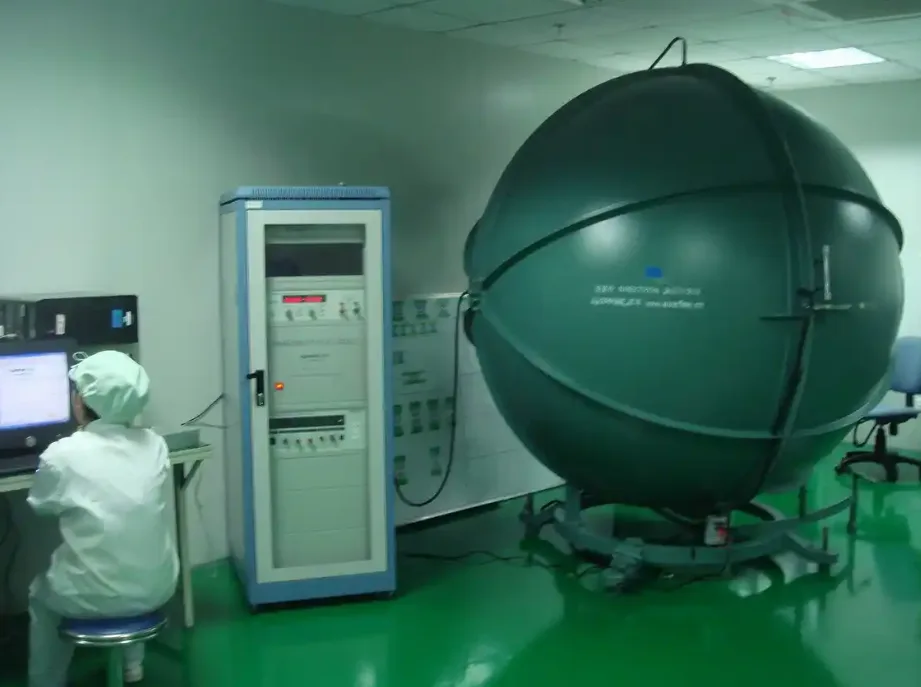

Which is more important when buying LED strip lights, Kelvin or Lumens?
The right lamps and lighting color temperature can not only add beauty to the home space but also create a comfortable living environment.
Different space to choose different color temperature lamps is very important, like the living room is the main place for family activities. Generally, choose 4000-5000K warm white so that the light source can ensure enough brightness but also to create a comfortable atmosphere. The bedroom is a place for rest and relaxation, and a warm light source of 2700-3000K is generally selected, which helps to relax the body and mind and improve the quality of sleep. The restaurant is a place to eat, generally choose 4000-5000K warm white light, which can ensure enough brightness, so that the food looks more attractive.
Lumens are units that describe the brightness of a light. In general, the higher the lumen value of the led strip, the greater its brightness.
Higher lumens are not always better. The appropriate lumen value of the lamp should be reasonably selected according to the actual needs and the location of the lamp. In the following cases, it is necessary to appropriately reduce the lumen value of the lamp: 1. Bedrooms, study rooms, etc., need to ensure comfort.
Therefore, it is necessary to fully understand and consider when purchasing lamps, and appropriate is the best!
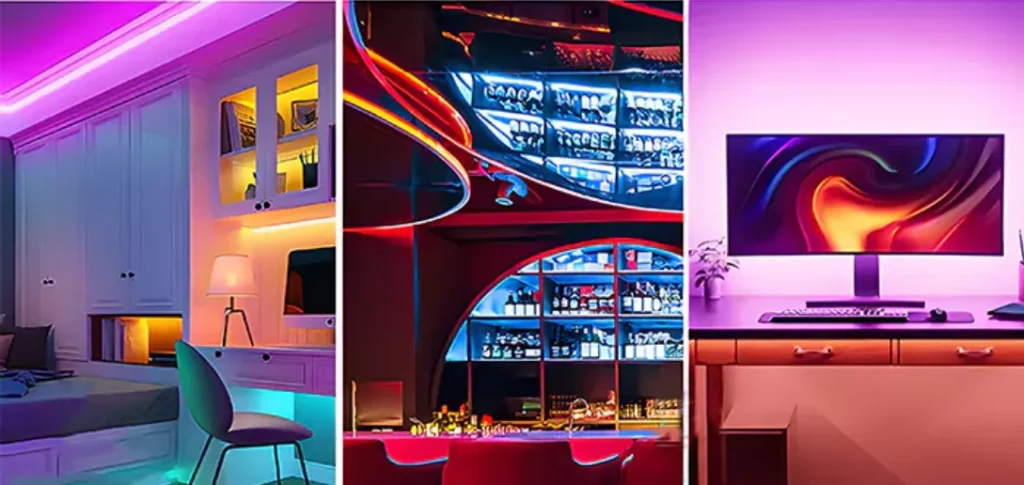
Conclusion
Lighting needs to consider Kelvin and Lumens. Good interior lighting design, to fully take into account the rationality of various parameters of lighting, often can make a space more comfortable so that people can also feel happy. Something needs to consider Kelvin and Lumens. Good interior lighting design, to fully take into account the rationality of various parameters of lighting, often can make a space more comfortable so that people can also feel happy.
With the extension of the average activity time, human beings have put forward higher requirements for lighting. In addition to the most basic functional lighting, the demand for lighting has further increased. Human activities have moved from plane space lighting to three-dimensional space lighting. Plane space lighting refers to the day does not need artificial light sources, natural light can meet people’s daily needs, the needs of the night are also short and local, the quality of the light requirements are not high, the three-dimensional space has to meet the lighting needs of people for a longer time, and the quality of the light source has higher requirements.

